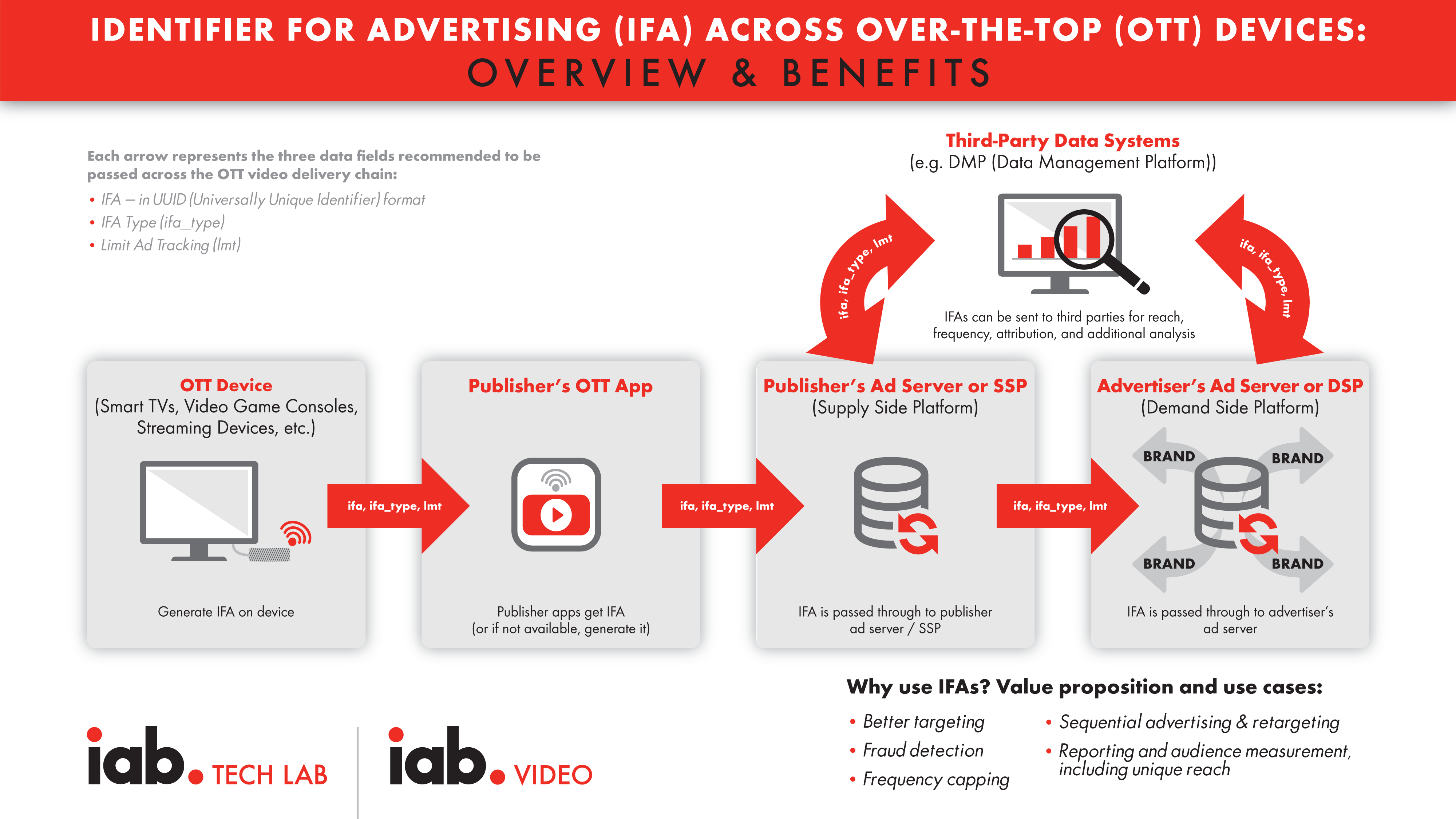IAB Tech Lab Working Group Releases Guidelines For CTV/OTT Devices, App Identification

Many technical challenges have emerged from the growth of connected TVs, set-top boxes and other OTT devices, along with the explosion of streaming services. On Friday the IAB Tech Lab OTT Technical Working Group called out the challenges and released guidelines to solve them.
The two main challenges include inconsistencies in how the industry uses app identifiers and the use of user agents to determine device types.
“There hasn’t been a standard ID to transact on in OTT app environments compared with mobile, where there’s an app bundle or app ID,” said Brian Garey, director of the advanced solutions group at SpotX, an online video ad platform. “Up until now we’ve seen platforms, device manufacturers, app developers and supply-side platforms generate their own app ID. There’s potential for the same app to have different IDs across different supply-side platforms.”
The idea is to improve transactions.
Unique app identifiers within OTT inventory are crucial for buyers to determine the type of apps they buy ad placements on, but also in targeting, blacklisting, brand safety, and fraud prevention.
Similar to the way marketers can identify domains and understand web traffic, buyers need a standardized way to identify and understand app traffic. Identifying the app correctly is also very important in anti-fraud initiatives such as app-ads.txt.
Inconsistencies caused by the use of the non-unique identifiers create challenges, however. Lack of guidelines as well as OTT device fragmentation have caused confusion in the OTT/CTV app space.
The guidance documented from the OTT Technical Working Group recommends using “app store IDs” where available. Guidelines also provide direction on how to communicate this in OpenRTB and VAST.
A more detailed discussion of the problem and guidance is available to download.
Then there is accurate device information — type, OS, and client software. Having the ability to identify them remains crucial in advertising, and allows for precise targeting, better creative delivery, analytics and measurement.
IAB Tech Lab working group members believe a large number of impressions on CTV devices are incorrectly reported as not CTV, making buyers question the campaign validity and sometimes denying publishers of proper credit for their inventory.
There is no reliable technology to identify the device type independently. The only standard facility that transports device and client software information is the User-Agent HTTP request header, and that solution has a number of gaps.
To address this, the OTT Technical Working Group recommends a usable structure for the User Agent string that device platforms should provide, as well as recommendations for additional methods that can be used to mitigate the problem.
Other challenges being worked through include how verification should work on OTT devices and updates to the AdCOM object model to better support video and OTT inventory.
The “Guidelines for OTT Identifier for Advertising (IFA)” was released in 2018, and the VAST4.x specs have been updated with best practices for ad delivery and measurement when using SSAI.
(104)